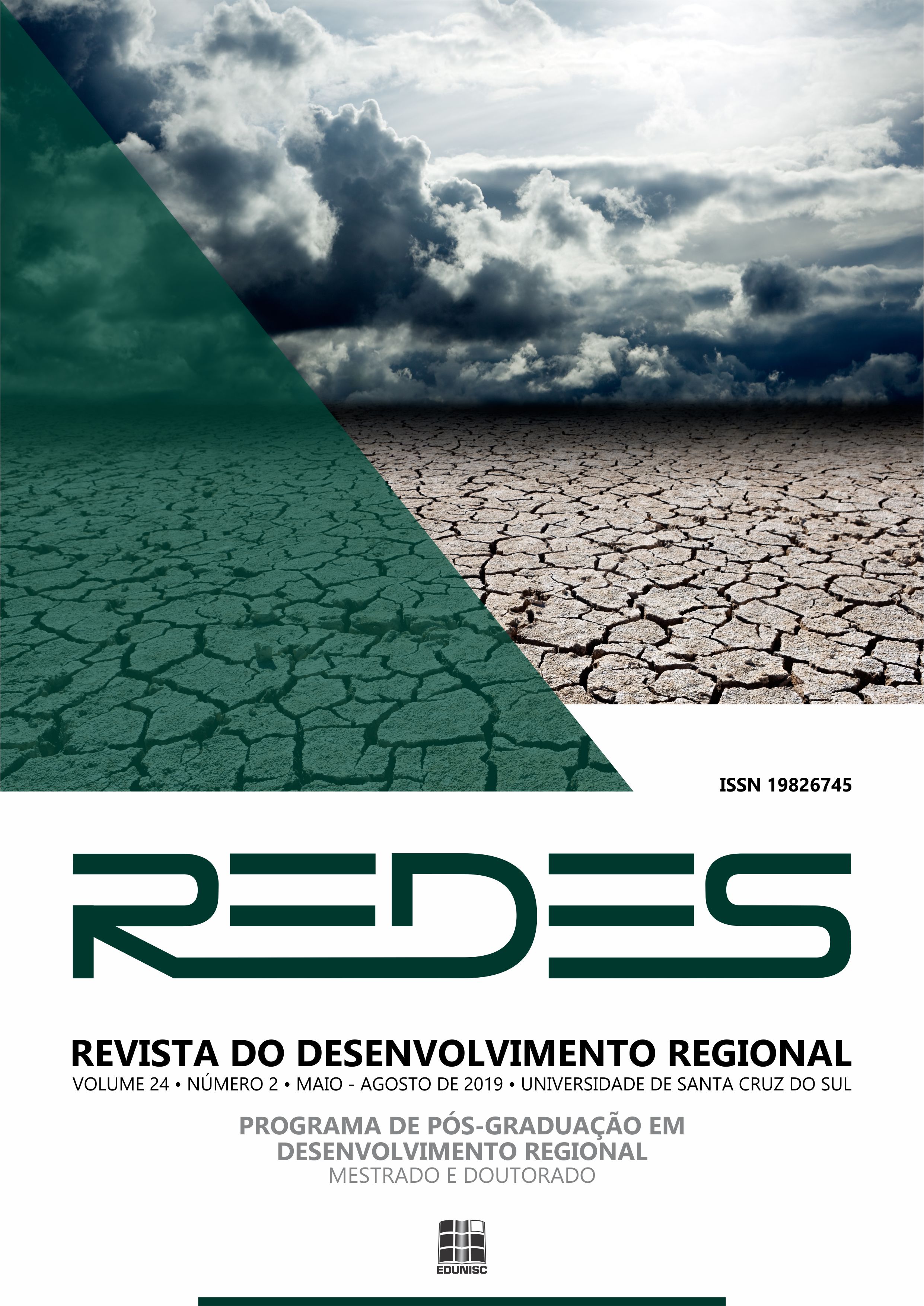Movements involving Kaingang Indians and German immigrants in territories of Caí hydrographic Basin
DOI:
https://doi.org/10.17058/redes.v24i2.8375Keywords:
German immigrants. Kaingang Indians. Territorial movements. Caí hydrographic basin.Abstract
This paper aims at analyzing the advance of the agricultural frontier of the Brazilian national State and the spatial movements of Kaingang Indians and German immigrants in Caí hydrographic basin. The Brazilian national State advance towards the plateau of the state of Rio Grande do Sul was accomplished through the settlement of German immigrants in the Caí hydrographic basin. This process built an interethnic frontier between the Kaingang people and German immigrants, intensifying relations of alliance and conflict between both groups. We consider that the territory and its distinct conceptions were a decisive aspect involving the relationship between Indians and immigrants, both on a matter of conflict and displacement. As if it was a disputed space between two ethnic groups, the gradual loss of territory implied that the Kaingang intensified their movements and belligerent charges against the invaders, following their own native cultural logic; concerning to immigrants, they had to consolidate the movements established and wanted by the Government.Downloads
Download data is not yet available.
Downloads
Published
2019-05-03
Issue
Section
Articles
License
The submission of originals to this journal implies the grant, by the authors, of the printed and digital publication rights. Authors retain copyright and grant the journal right of first publication. Authors may only use the same results in other publications clearly indicating this journal as the medium of the original publication. Because we are an open access journal, we allow free use of the articles in educational and scientific applications provided the source is cited under the Creative Commons (CC-BY) license.How to Cite
Movements involving Kaingang Indians and German immigrants in territories of Caí hydrographic Basin. (2019). Redes , 24(2), 186-208. https://doi.org/10.17058/redes.v24i2.8375



